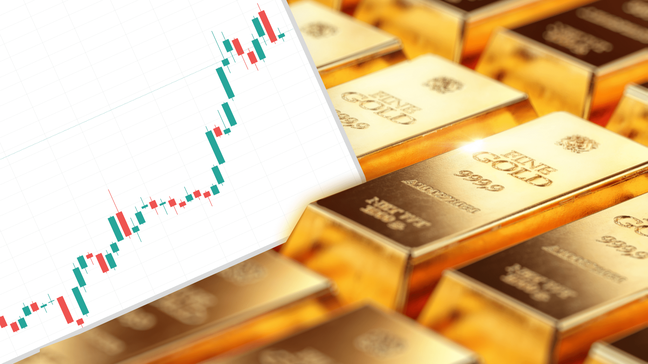Market sentiment remains mostly offbeat as traders await the US Federal Reserve’s (Fed) favorite inflation gauge, namely the US Core PCE Price Index. Apart from the pre-data anxiety, downbeat prints of China’s official PMI and geopolitical tensions in the Middle East also challenge the risk appetite.
With this, the US Dollar Index (DXY) reverses the previous day’s losses while bracing for another weekly gain. It’s worth noting that the Greenback marked the biggest daily fall in a week on Thursday after witnessing softer US data and a pullback in the Treasury bond yields.
That said, the US Dollar’s rebound joins the cautious mood ahead of Eurozone inflation data to challenge the EURUSD buyers. At the same time, GBPUSD also fades the prior recovery and appears well-set for the first weekly loss in three. Further, USDJPY extends the previous day’s retreat on strong Japan inflation and Retail Trade data whereas USDCAD pares weekly gains despite softer crude oil prices as the Loonie traders await Canadian GDP numbers.
AUDUSD and NZDUSD fail to justify pessimism surrounding China, as well as the market’s anxiety, amid recent concerns that the Reserve Bank of Australia (RBA) and the Reserve Bank of New Zealand (RBNZ) will trace the Fed’s “higher for longer interest rate” bias.
Gold price stays on the way to reversing the previous weekly loss, the biggest in 2024, even as China news and the US Dollar’s corrective bounce challenges the metal’s recovery. Additionally, Crude Oil drops for the third consecutive day even as US weekly oil inventories deteriorate.
Elsewhere, BTCUSD and ETHUSD stay on the back foot despite lacking momentum during intraday as the crypto market witnessed correction after the ETF approval-led rally.
Following are the latest moves of the key assets:
- WTI Crude oil lacks clear directions around $77.80 after a two-day losing streak.
- Gold fades the previous day’s recovery while making rounds to $2,345 at the latest.
- The USD Index pares the biggest daily loss in a fortnight while posting mild gains near 104.85 by the press time.
- Wall Street closed with mild losses and challenges the Asia-Pacific bulls. British and European shares remain dicey during the initial trading hour.
- BTCUSD and ETHUSD both remain indecisive around $68,400 and $3,750 as we write.
Cautious mood underpins US Dollar rebound but Gold eyes weekly gain…
The US Dollar eyes another weekly gain despite the previous day’s losses as traders anticipate hawkish Fed bias even as today’s US Core PCE Price Index softens from the last month. Also underpinning the US Dollar’s strength could be the recent weakness in China’s official PMIs for May, as the headline NBS Manufacturing PMI reported a contraction in activities. Furthermore, Israel’s hesitance to stop military attacks in Rafah irrespective of the global pressure and the US readiness to restrict AI chip exports to the Middle East also roil the mood and favors the Greenback’s haven demand, especially when most of the FOMC members push back rate cuts to late 2024.
On Thursday, the second reading of the US Q1 GDP showed a softer growth per the Annualized figure, 1.3% versus 1.6% initial estimation. The details also showed easing consumption and price pressure. The same joined higher US Jobless Claims and a contraction in the US Pending Home Sales to trigger a pullback in the US Treasury bond yields and the US Dollar.
While the US data weighed on the US Dollar, the upbeat prints of Eurozone sentiment data for May and the Unemployment Rate for April allowed EURUSD to recover ahead of today’s first readings of the bloc’s headline inflation numbers. It should be noted, however, that most of the European Central Bank (ECB) officials have already confirmed rate cuts in June but kind of hesitate in suggesting any further action, which in turn highlights today’s EU CPI and HICP data.
GBPUSD recovered the previous day on a softer US Dollar but stays on the way to snapping a two-week uptrend as mixed UK data raise doubts about the BoE officials’ hawkish tone.
On the other hand, a lack of confidence in the Bank of Japan’s (BoJ) next move fail to propel the USDJPY prices as Japan’s Tokyo CPI, Industrial Production and Retail Trade marked upbeat figures for April. Also exerting downside pressure on the Yen pair is a pullback in the yields.
AUDUSD and NZDUSD grind higher despite doubts about their respective central banks’ next moves as traders anticipate more stimulus from China supporting the Antipodeans. It should be noted, however, that the dovish bias about the Bank of Canada (BoC) and the recent weakness in the crude oil prices, Canada’s key export, weigh on the Canadian Dollar (CAD).
Crude Oil prepares for the weekend meeting of the OPEC+ where the global oil producers are expected to extend the current output cut. In doing so, the energy prices fail to justify a draw in the US oil inventories, as well as the supply-crunch fears emanating from the Middle East tensions.
Gold price remains firmer on a weekly basis, despite the latest failure to rise, as optimism in the equities’ front joins hopes of lower rates from major economies and China stimulus. Furthermore, the US Dollar’s struggle to defend the weekly gains and expectations of witnessing a steady weakness in the US inflation data also allow the spot Gold price (XAUUSD) to remain firmer.
- Strong buy: USDCAD, USDJPY, US Dollar, Silver
- Strong sell: AUDUSD, NZDUSD, GBPUSD
- Buy: BTCUSD, ETHUSD, Nasdaq, Gold, DJI30, USDCNH
- Sell: DAX, FTSE 100, EURUSD, Crude Oil
Inflation data in the spotlight…
Be it from the Eurozone or the US, the inflation numbers are today’s key catalysts as central bankers at the ECB and the Fed try to push back expectations of repeated rate cuts in 2024. Apart from that the Q1 GDP numbers from India and Canada, as well as the weekend meeting of the OPEC+, will also be important to watch looking forward.
It’s worth noting, however, that the ECB is almost certain to announce the first rate reduction in June and is more likely to go ahead on that path during the rest of 2024 than the Fed. On the other hand, the Fed bets initially marked expectations of three rate cuts starting from June but the odds have recently changed and hence favored the US Dollar. That said, traders anticipate nearly one or two rate cuts from the Fed starting in July or August.
Hence, firmer EU inflation data might not help the EURUSD pair to rise further while a positive surprise from the US Core PCE Price Index will surely drown the Euro pair and also challenge the Gold buyers.
May the trading luck be with you!




